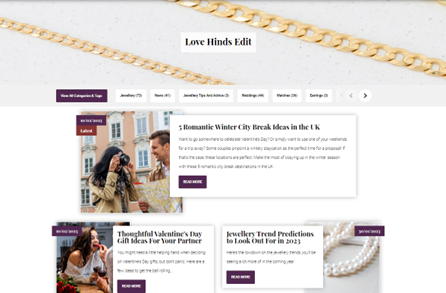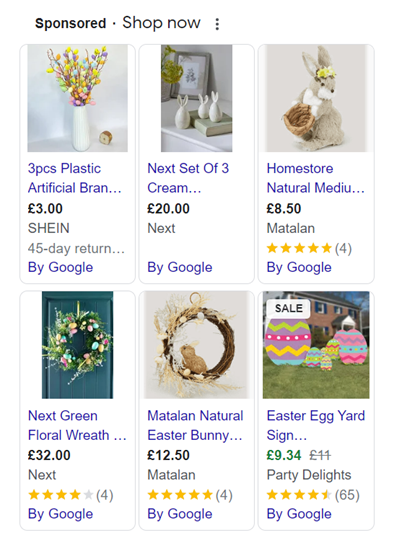Let’s Get Topical: Using Trending Events and Holidays To Boost Your Digital Marketing

Creating a digital marketing strategy that ties into holidays, major events and seasonal trends is a great way to boost your online efforts. By tapping into already relevant conversations, you can reach and engage with new audiences.
Holidays such as Christmas and Halloween offer an easy in to target occasion, but with these types of holidays comes tough competition, especially for sectors like retail. Understanding where to focus your efforts is your first port of call when working on your strategy.
Within any industry, there are peaks and troughs. Considering the sector you sit in, understanding trends to target and creating a strategy are paramount in helping your brand grow.
Identifying dates and trends for your digital marketing strategy
There is a plethora of marketing calendars available online, with dates as obvious as Christmas Day to the more niche ‘World Emoji Day’ and ‘Talk Like a Pirate Day’. While we don’t recommend stuffing your calendar with irrelevant days, it’s worth looking at which are relevant to your brand. Targeting well-known alongside more niche dates is one way to ensure you’re reaching a broad, yet relevant range of people.
Use widespread holidays to support your digital marketing efforts
Valentine’s Day. New Year’s Eve. Pancake Day.
If there’s a link there, use it. While some holidays such as Christmas may be easier for most brands to tap into, consider other mass-marketed dates and highlight ones that fit with your brand.
Get creative with making the most of these mainstream events. Why not build a multi-faceted approach, combining the likes of SEO and PPC to leverage maximum impact?
Target industry-specific trends
Once you’ve weaved seasonal events and holidays into your marketing strategy, it’s time to narrow down the playing field. Every industry has easy-to-identify trends throughout the year.
Create a calendar of industry-specific, niche seasonal trends. If you’re not sure where to start, take a look at historic data. For example, where have you seen uplifts in sales or a spike in traffic to your website? Use this bank of internal data to guide your plan. You can also take inspiration from other brands in your industry to ensure you’re on the right track.
Strategies to support your seasonal trends-based marketing calendar
Digital marketing can help support your campaigns through SEO, content strategies, paid media and digital PR. Once you’ve created your calendar, it’s time to look at which tactics will best support your brand based on sector, season and goals.
Using SEO to get your website up to speed
SEO is all about the long game. It may feel counterintuitive to put time and effort into SEO for one day or event. But if it feeds into your brand and will help drive meaningful traffic to your site, you’d better knuckle down and work on your strategy.
- Keyword research: The cornerstone of SEO, understanding what keywords to use in your content is vital to the success of your campaign. You will likely have year-round and ‘always on’ keywords but how can you link these to holidays or events? Take the time to do your research and home in on which phrases will deliver. Be sure to be reasonable with your phrases, if you specialise in jumpers and try to target a generic phrase such as ‘Christmas jumpers’, your hard work will be for nothing. Aim for niche phrases or longtail keywords to target specific user intent.
- Tailoring your content: With your keywords selected, it’s time to put them into action. Create content surrounding your chosen event and tap into why your brand is relevant. Don’t jump on any old bandwagon, be sure that the season or event fits your market. For example, automotive brands may choose to focus on the official start of winter and create campaigns surrounding products like winter tyres and de-icer or create blogs around road safety during bad weather.
F.Hinds plays cupid

Nothing says ‘I love you’ like a piece of jewellery, something that long-time client F.Hinds knows all too well. But with an abundance of options in the market, how can you stand out from the crowd and get your audience to convert?
F.Hinds created a landing page on site aptly named the ‘Love Hinds Edit’. Driving users with high search intent to their site, they delivered Valentine’s-Day-specific content. Offering gift guides, weekend break ideas and much more, the renowned brand looked to inspire their shoppers. By providing informative and helpful content, they were more likely to see their audience convert than by simply pushing promotions.
Paid media casts the net far and wide
Paid media and seasonal content go hand in hand. While SEO allows you to focus on organic search and tailoring your content to provide highly relevant information, paid media takes that information and pushes it in front of the right audience. For events or holidays, paid media enables you to take the reins and, provided you’ve got the budget in place, land your ads in front of those most likely to convert.
- Pay per click: PPC, the bread and butter of paid media, enables you to promote your product or services to specific audiences based on set targeting features. The catch? You have to pay for it and keywords can fluctuate in price depending on demand. To see any kind of return, you need to tailor your campaigns: consider targeting people earlier, focusing on niche phrases or pushing your ads to those who have previously engaged with your product.
- Paid social: We’re spending more and more time on social channels above and beyond any other web app. With a plethora of targeting capabilities through in-app ad tools, you can promote unique and tailored content to those who are most interested in your product. In a sea of seasonal messaging, think about how your ad creatives can stand out from the crowd.
- Retargeting: The easiest sales come from those who are already invested in your brand. While paid media can help you reach new audiences, it can also reengage with those who have expressed an interest in your brand before. Create specific ad campaigns targeting people who have bought from you before, or added to cart but never finished their journey. As people are bombarded with seasonal messaging, they are more likely to convert with those they are familiar with or have bought from before.
Retailers go hopping mad for Easter

Brands across the board are recognising that much like people decorate their homes for Christmas, seasonal décor across the year is on the up. Thanks to influencers turning what were once more lowkey events into all-out celebrations, holidays like Easter are having their moment.
Tapping into this trend, you can use niche search phrases in your PPC strategy, like ‘Easter décor’. Targeting words with slightly less mass-market appeal but a high search intent means that ads will be delivered to those who are much more likely to click on them and continue their journey through to purchase.
Use creative digital PR to reach new audiences
Alongside PPC and SEO, digital PR helps to boost your brand awareness and reach new audiences through engaging and thought-provoking content.
While other digital marketing strategies target those searching specific queries or phrases in relation to your business, PR casts a much wider net. This method works particularly well for seasonal content or trending events, which are likely to be spoken about across a range of publications. By creating relevant pieces with an interesting angle, your piece can be picked out of the seasonal noise and drive clicks to your site.
Hammonds provide some festive fun

A notoriously difficult time of year for PR to stand out, stories gaining traction at Christmas can be a challenge. Hammonds launched a campaign in partnership with Giving Tree, a charity that aims to provide children with presents based on donations from the public.
Using a brain teaser, readers were challenged to spot presents hidden throughout a house. This PR was promoted to various sites and thanks to its eye-catching nature, was picked up by well-known publications, gaining several links back to Hammond’s website.
Standing out in a sea of seasonal messaging
Knowing that you should be targeting set events and seasons is one thing. Understanding which to target and how to do so effectively is an entirely different story.
As more events become celebrated on mass and holiday marketing takes on a life of its own, it can feel impossible to stand out from the crowd. As a digital marketing agency, we are well-versed in cutting through the noise and knowing what to target, and when.
With a team of experts across PPC, SEO and digital PR, alongside experience across a huge range of industries, we know what it takes to help your brand excel. Want to know more? Get in touch.